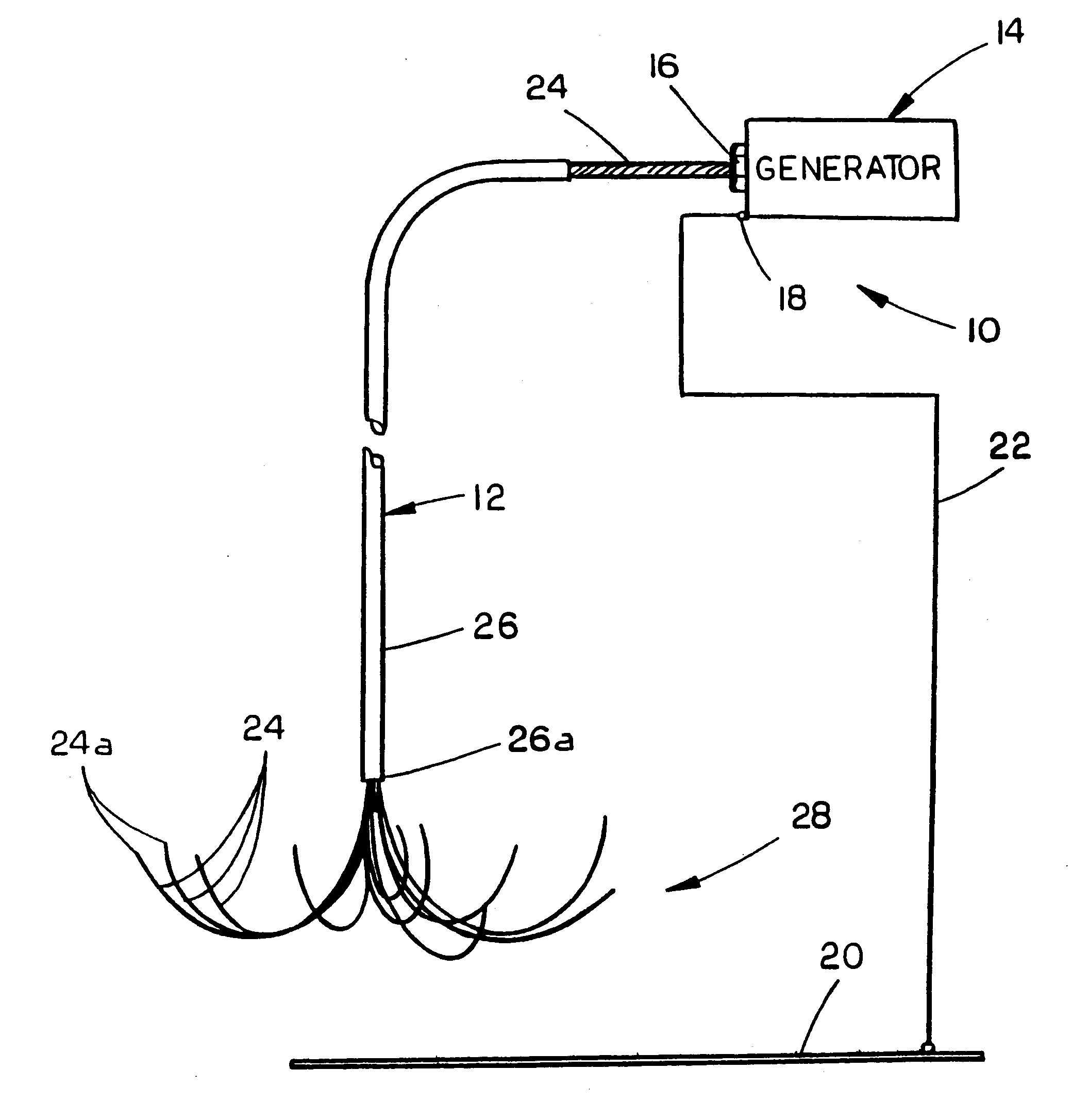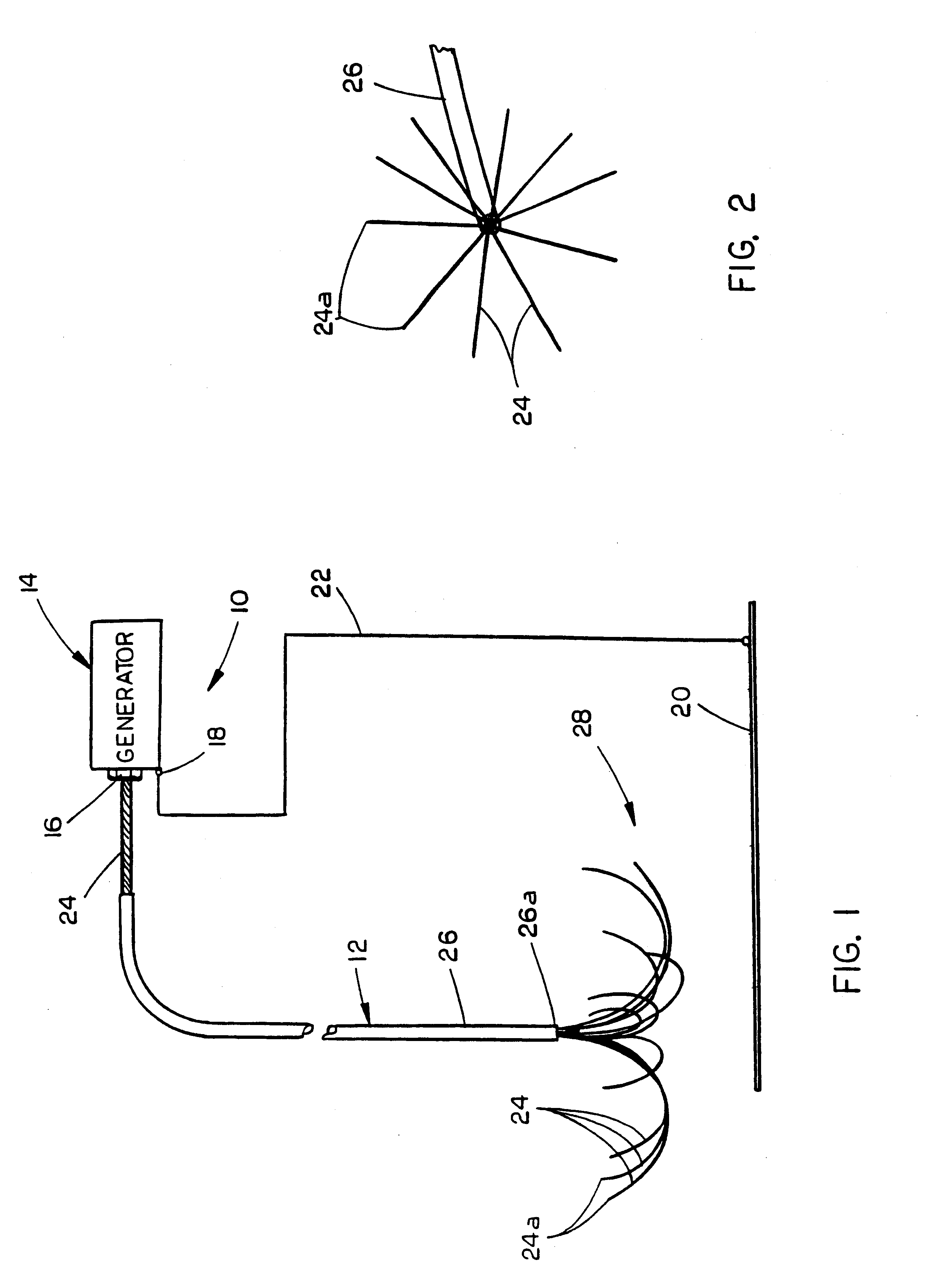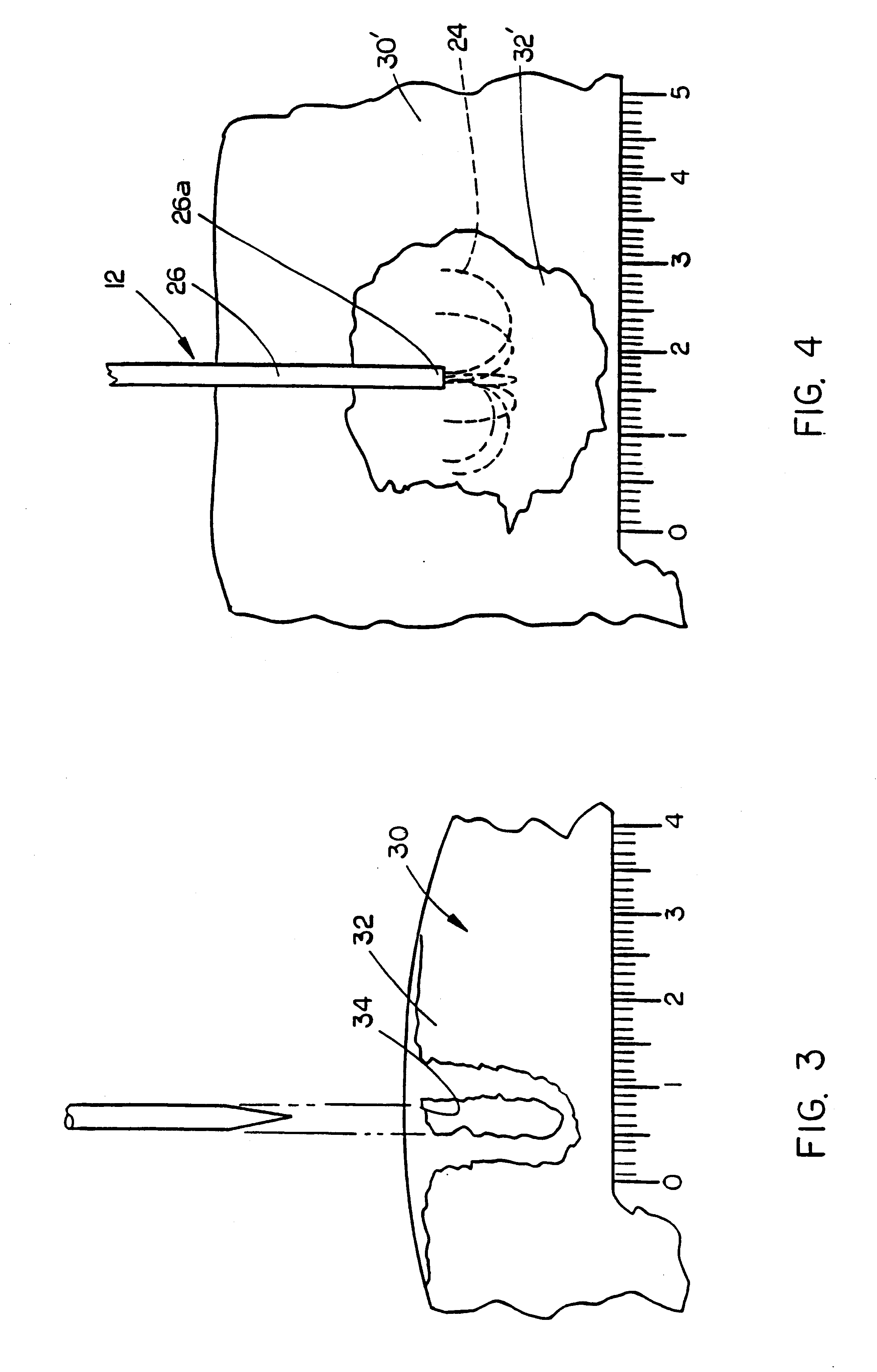Systems according to the present invention will employ a plurality of tissue-penetrating electrodes, typically in the form of sharpened, small diameter metal wires which can penetrate into tissue as they are advanced from a target site within the treatment region, as described in more detail hereinafter. The electrode elements, however, can also be formed in other manners, such as blades, helices, screws, and the like. The primary requirement of such electrode elements is that they can be deployed in an array, preferably a three-dimensional array, emanating generally from a target site within the treatment region of the tissue. Generally, the electrode elements will be first introduced to the target site in a radially collapsed or other constrained configuration, and thereafter advanced into the tissue from a delivery element in a divergent pattern to achieve the desired three-dimensional array. Preferably, the electrode elements will diverge radially outwardly from the delivery element (located at the target site) in a uniform pattern, i.e., with the spacing between adjacent electrodes diverging in a substantially uniform and / or symmetric pattern. In the exemplary embodiments, pairs of adjacent electrodes will be spaced-apart from each other in similar or identical, repeated patterns and will usually be symmetrically positioned about an axis of the delivery element. The electrode elements may extend or project along generally straight lines from the target site, but will more usually be shaped to curve radially outwardly and optionally to evert proximally so that they face partially or fully in the proximal direction when fully deployed. It will be appreciated that a wide variety of particular patterns can be provided to uniformly cover the region to be treated.
A preferred form of the individual electrode element of an electrode array is a single wire having a shaped distal portion which can be extended from the delivery element at the target site in the tissue to diverge in a desired pattern. Such wires can be formed from conductive metals having a suitable shape memory, such as stainless steel, nickel-titanium alloys, spring steel alloys, and the like. The wires may have circular or non-circular cross-sections, with circular wires typically having a diameter in the range from about 0.1 mm to 2 mm, preferably from 0.2 mm to 0.5 mm, often from 0.2 mm to 0.3 mm. The non-circular wires will usually have equivalent cross-sectional areas. Optionally, the distal ends of the wires may be honed or sharpened to facilitate their ability to penetrate tissue. The distal ends of such wires may be hardened using conventional heat treatment or other metallurgical processes. Such wires may be partially covered with insulation, although they will be at least partially free from insulation over their distal portions which will penetrate into the tissue to be treated. In the case of bipolar electrode arrays, it will be necessary to insulate the positive and negative electrode wires in any regions where they would be in contact with each other during the power delivery phase. In the case of monopolar arrays, it may be possible to bundle the wires together with their proximal portions having only a single layer of insulation over the entire bundle. Such bundled wires may be brought out directly to a suitable RF power supply, or may alternatively be connected via other (intermediate) electrical conductors, such as coaxial cable, or the like.
The above-described electrode characteristics apply only to active electrodes intended to have the desired surgical effect, i.e., heating of the surrounding tissue. It will be appreciated that in monopolar operation, a passive or dispersive "electrode" must also be provided to complete the return path for the circuit being created. Such electrodes, which will usually be attached externally to the patient's skin, will have a much larger area, typically about 130 cm.sup.2 for an adult, so that current flux is sufficiently law to avoid significant heating and other surgical effects. It may also be possible to provide such a dispersive return electrode directly on a portion of a sheath or elongate member of the system of the present invention, as described in more detail below (generally, when the return electrode is on the sheath, the device will still be referred to as bipolar).
The RF power supply may be a conventional general purpose electrosurgical power supply operating at a frequency in the range from 400 kHz to 1.2 MHz, with a conventional sinusoidal or non-sinusoidal wave form. Such power supplies are available from many commercial suppliers, such as Valleylabs, Aspen, Bovie, and Birtcher.
The plurality of electrode elements will usually be contained by or within an elongate member which incorporates the delivery element, typically a rigid, metal or plastic cannula. The elongate member serves to constrain the individual electrode elements in a radially collapsed configuration to facilitate their introduction to the tissue target site. The electrode elements can then be deployed to their desired configuration, usually a three-dimensional configuration, by extending distal ends of the electrode elements from the elongate member into the tissue. In the case of the tubular cannula, this can be accomplished simply by advancing the distal ends of the electrode elements distally forward from the tube so that they emerge and deflect (usually as a result of their own spring memory) in a radially outward pattern. Alternatively, some deflection element or mechanism could be provided on the elongate member to deflect members with or without shape memory in a desired three-dimensional pattern.
A component or element will be provided for introducing the elongate member to the target site within the treatment region to be treated. For example, a conventional sheath and sharpened obturator (stylet) assembly can be used to initially access the target site. The assembly can be positioned under ultrasonic or other conventional imaging, with the obturator / stylet then being removed to leave an access lumen through the sheath. The electrode elements can then be introduced through the sheath lumen, typically while constrained in the elongate member. The electrode elements are then extended distally beyond the distal end of the sheath into the treatment region of tissue, and the elongate member can subsequently be withdrawn or left in place. RF current can then be applied through the electrodes in either a monopolar or bipolar fashion. With monopolar treatment, a dispersive plate attached externally to the patient is attached to the other lead from the RF power supply. Alternatively, a return electrode having a relatively large surface area can be provided on the elongate member, or the sheath. In bipolar operation, the individual electrode elements can be connected alternately to the two poles of the RF power supply. Alternatively, one or more additional electrode elements can be penetrated into the tissue and serve as a common electrode connected at the second pole.
 Login to View More
Login to View More  Login to View More
Login to View More 


